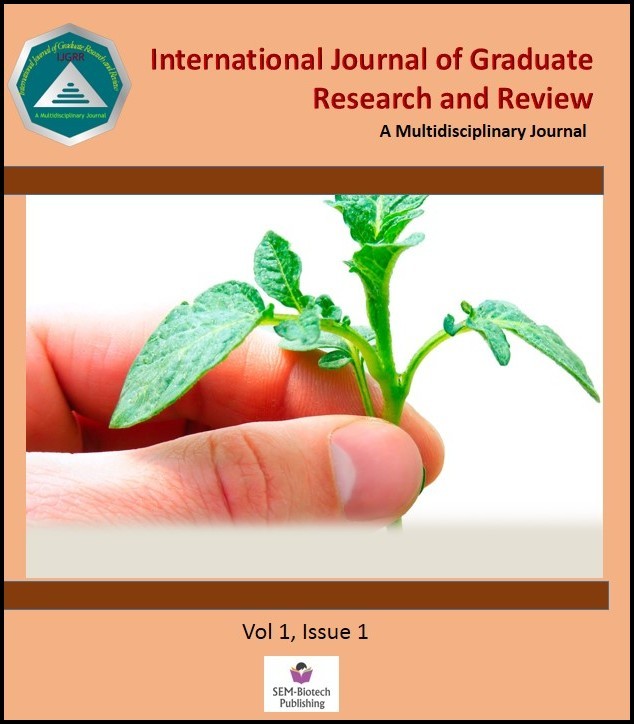





Anaemia and Its Associated Factors among Children Under-Five in Rural Area of Lahore
Firdous Akbar*, Muhammad Hussain1, Muhammad Afzal1, Syed Amir Gilani 2
1Lahore School of Nursing, The University of Lahore.
2Faculty of Allied Health Sciences (AHS), The University of Lahore
Firdous Akbar*, Muhammad Hussain1, Muhammad Afzal1, Syed Amir Gilani 2
1Lahore School of Nursing, The University of Lahore.
2Faculty of Allied Health Sciences (AHS), The University of Lahore
Abstract
Introduction: Anemia is major public health problems in all over the world but mostly in developing countries. Globally evaluation of childhood anemia indicates that 293.1 million (approximately 43%) of children under five years of age are anemic worldwide. Anemia is a condition having lower number of red blood cell or quantity of hemoglobin than normal. Anemia reduces the ability of the blood to carry oxygen. Methods: A cross-sectional descriptive study design was used to identify the risk factor of anemia in children under-five year children. Children between ages of 6 to 59 months were included in the current study. Children whose age was less than 6 months and more than 59 months were excluded from the current study. Participants were selected through convenient sampling technique. Sample size was calculated by using “Proportion formula” which was 132. A well-constructed close ended questionnaire was distributed among people of Hussain Abad Community, Lahore. Ethical principle was performed during research study. Permission was taken from the Ethical committee of LSN department in University of Lahore. Data is analyzed in the form of tables and graphs through SPSS version 20. Statistical computer software for data analysis. Results: Finding of the study show that most of mother in that particular area have poor education and do not know the advantages of breastfeeding. Decreased anemia prevalence in preschool children in rural community over the study period could be a result of enhanced maternal-child health interventions, such as antenatal care for pregnant women (aimed at reducing low birth weight and anemia during pregnancy), breastfeeding promotion education. Conclusions: Strategies for anemia prevention and control have had a beneficial effect in the area studied. Associated factors of anemia have steadily decreased, but it is still classified as a moderate public health problem, with greatest impact in children aged 6-59 months. Moreover, it is classified as a severe problem for the group aged 6-23 months in this region and more common in females as compared to male.
Keywords: Breast feeding; birth weight; risk factors.
Introduction: Anemia is major public health problems in all over the world but mostly in developing countries. Globally evaluation of childhood anemia indicates that 293.1 million (approximately 43%) of children under five years of age are anemic worldwide. Anemia is a condition having lower number of red blood cell or quantity of hemoglobin than normal. Anemia reduces the ability of the blood to carry oxygen. Methods: A cross-sectional descriptive study design was used to identify the risk factor of anemia in children under-five year children. Children between ages of 6 to 59 months were included in the current study. Children whose age was less than 6 months and more than 59 months were excluded from the current study. Participants were selected through convenient sampling technique. Sample size was calculated by using “Proportion formula” which was 132. A well-constructed close ended questionnaire was distributed among people of Hussain Abad Community, Lahore. Ethical principle was performed during research study. Permission was taken from the Ethical committee of LSN department in University of Lahore. Data is analyzed in the form of tables and graphs through SPSS version 20. Statistical computer software for data analysis. Results: Finding of the study show that most of mother in that particular area have poor education and do not know the advantages of breastfeeding. Decreased anemia prevalence in preschool children in rural community over the study period could be a result of enhanced maternal-child health interventions, such as antenatal care for pregnant women (aimed at reducing low birth weight and anemia during pregnancy), breastfeeding promotion education. Conclusions: Strategies for anemia prevention and control have had a beneficial effect in the area studied. Associated factors of anemia have steadily decreased, but it is still classified as a moderate public health problem, with greatest impact in children aged 6-59 months. Moreover, it is classified as a severe problem for the group aged 6-23 months in this region and more common in females as compared to male.
Keywords: Breast feeding; birth weight; risk factors.
Full text: PDF
Int. J. Grad. Res. Rev.Vol-5, Issue-1: 6-11



